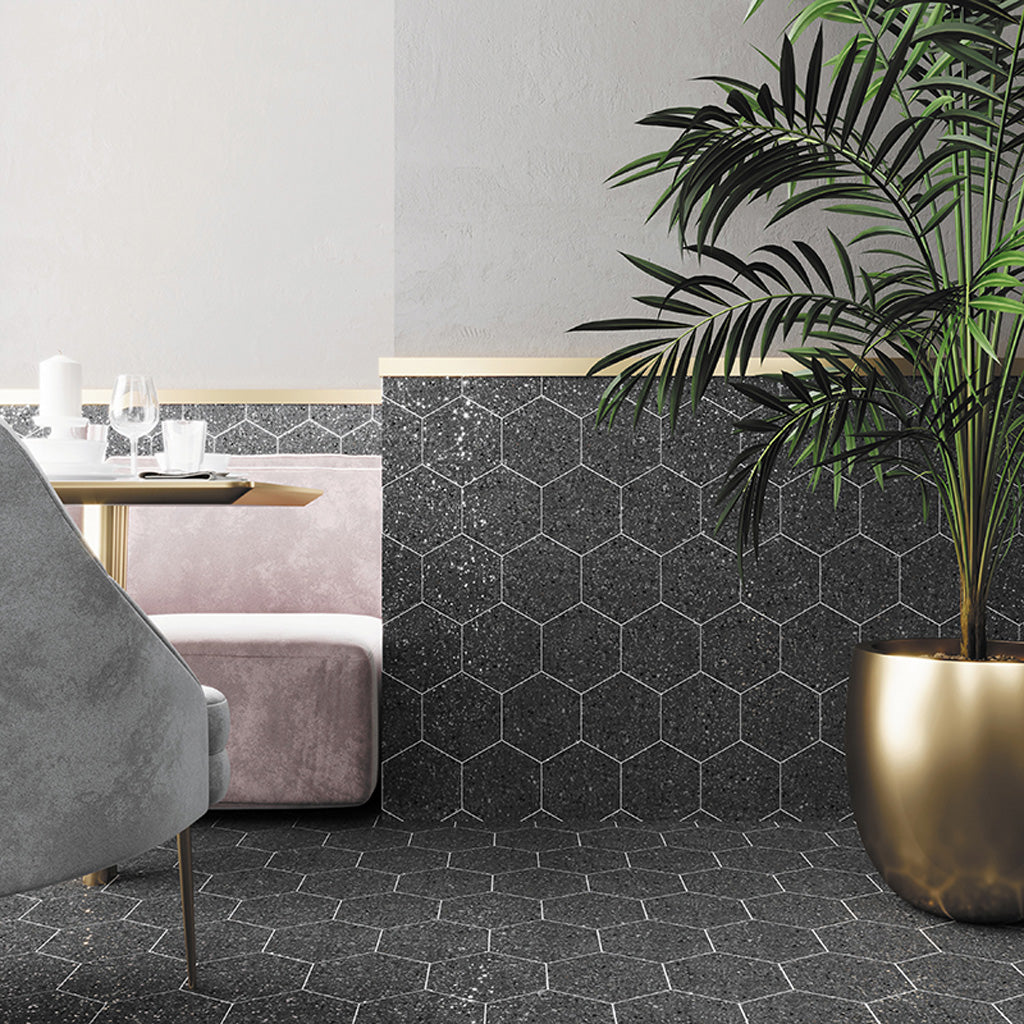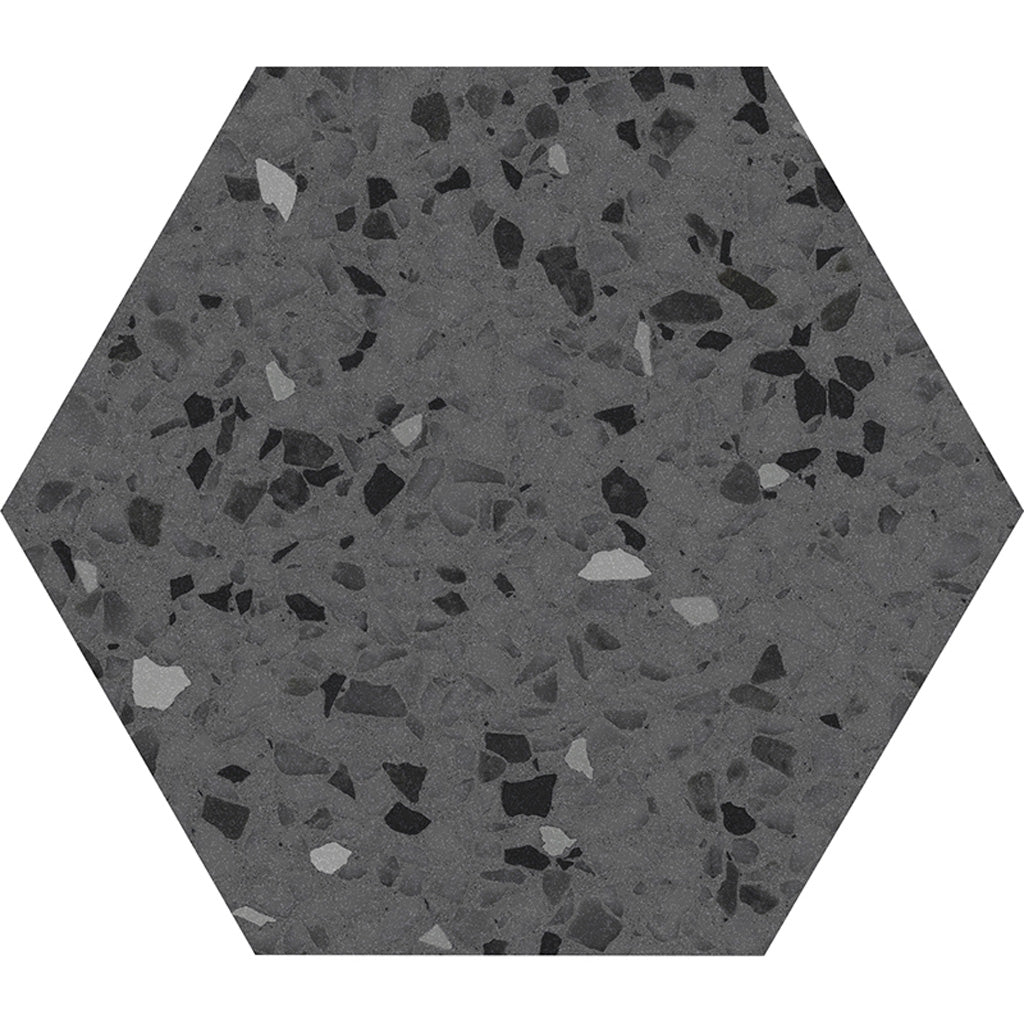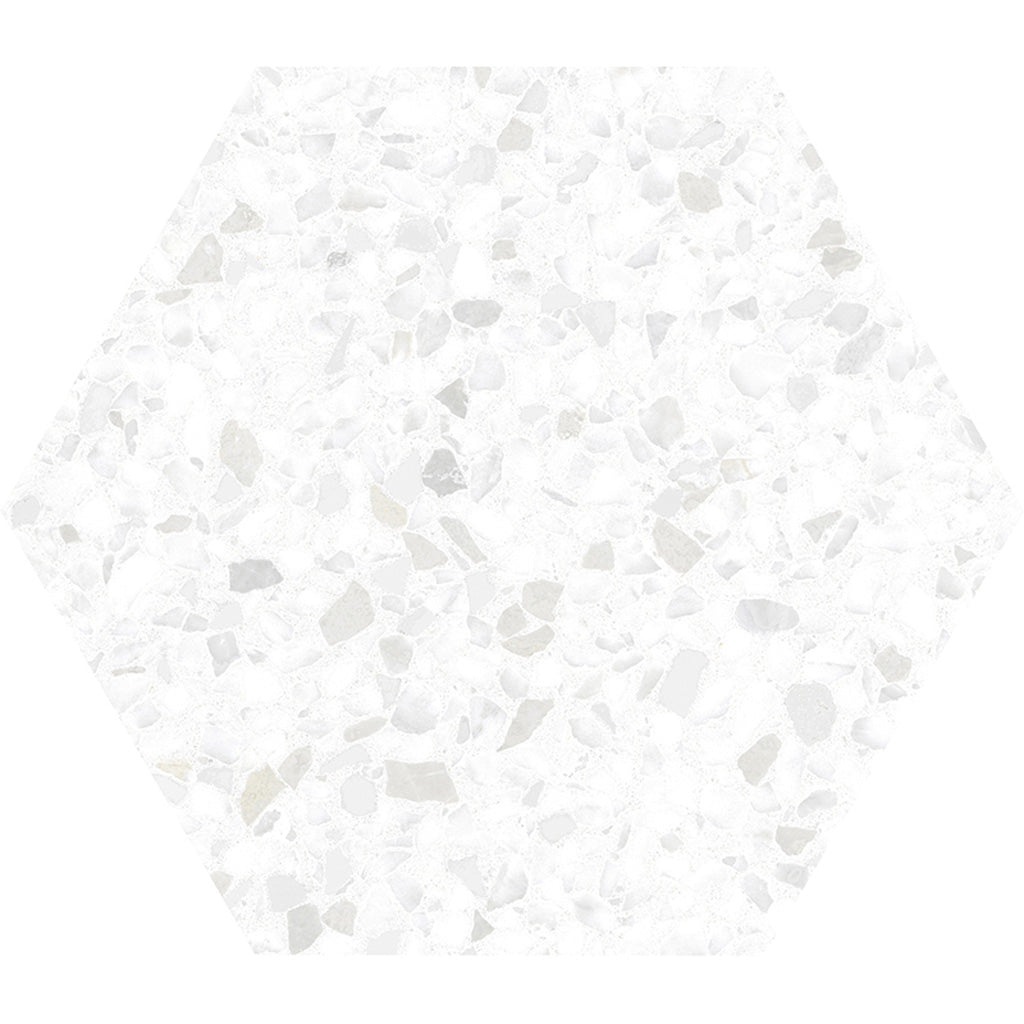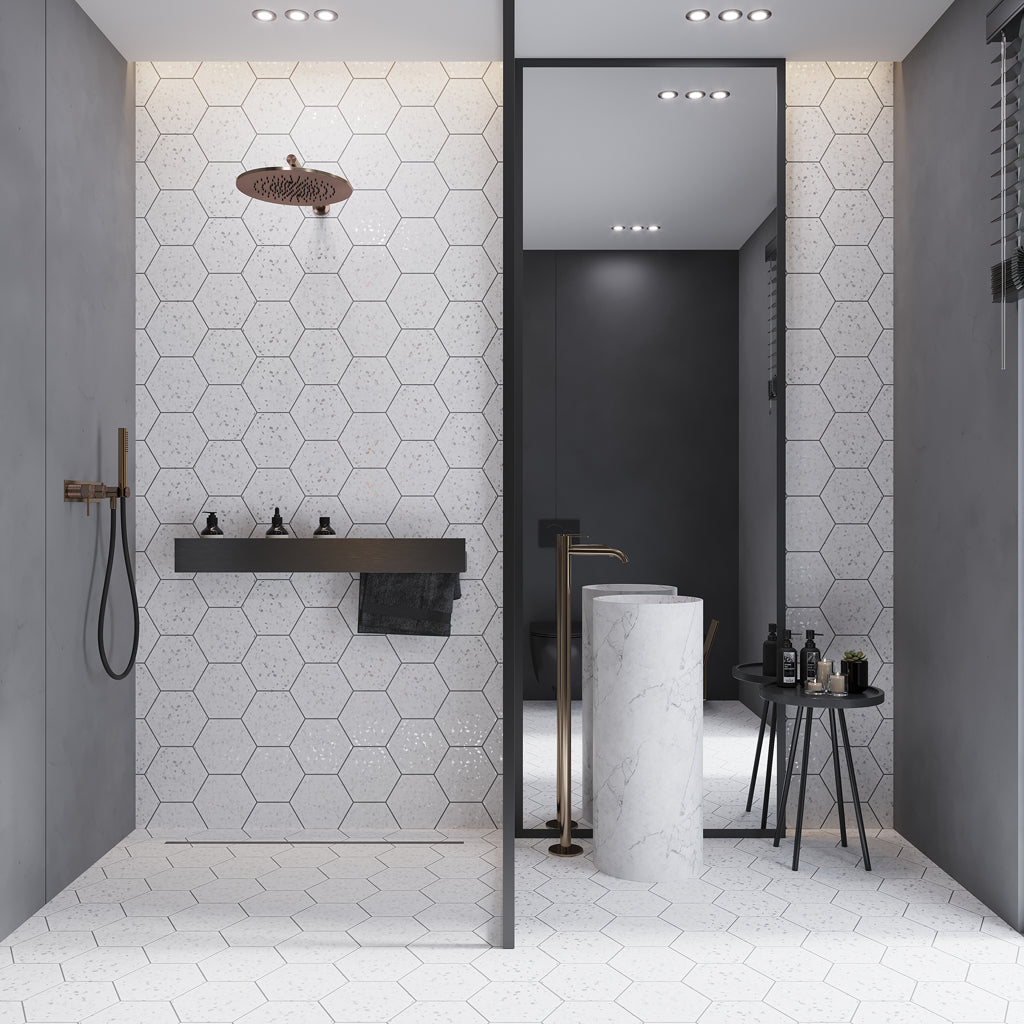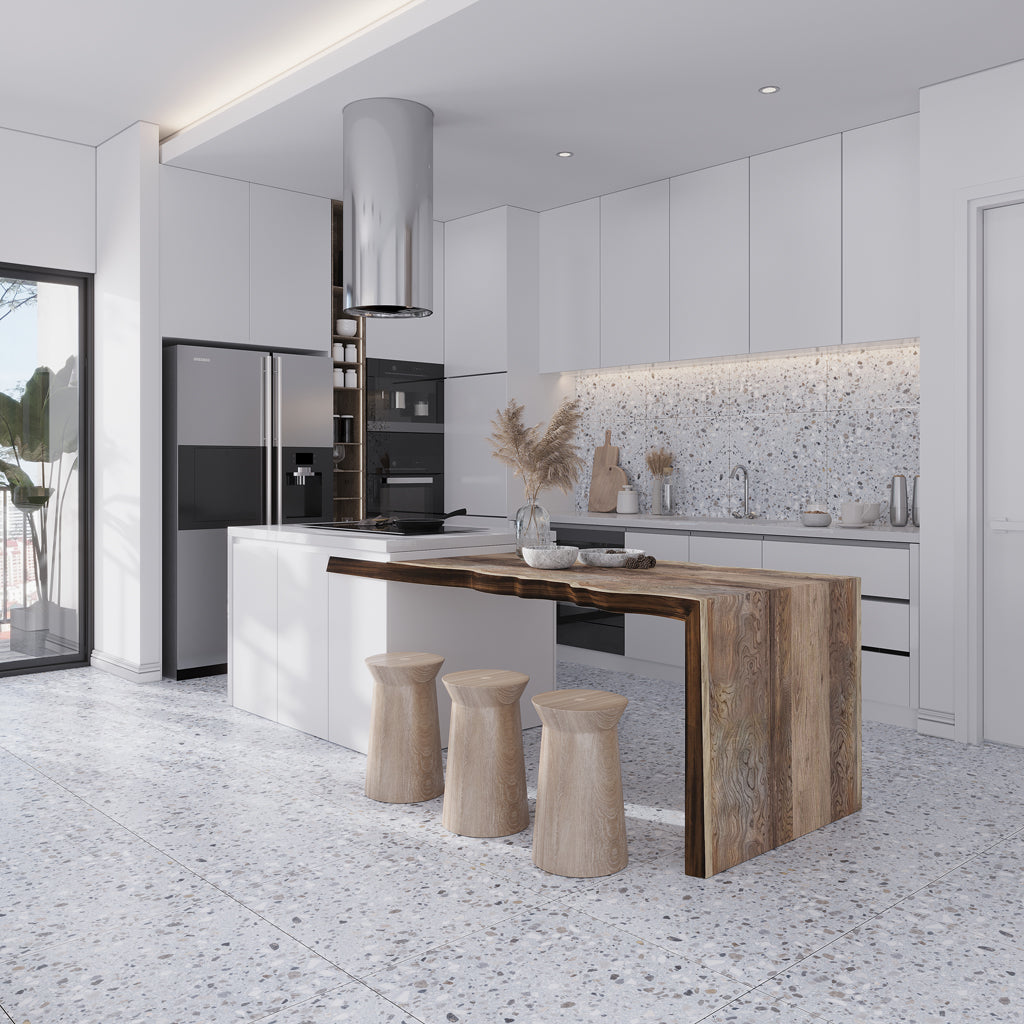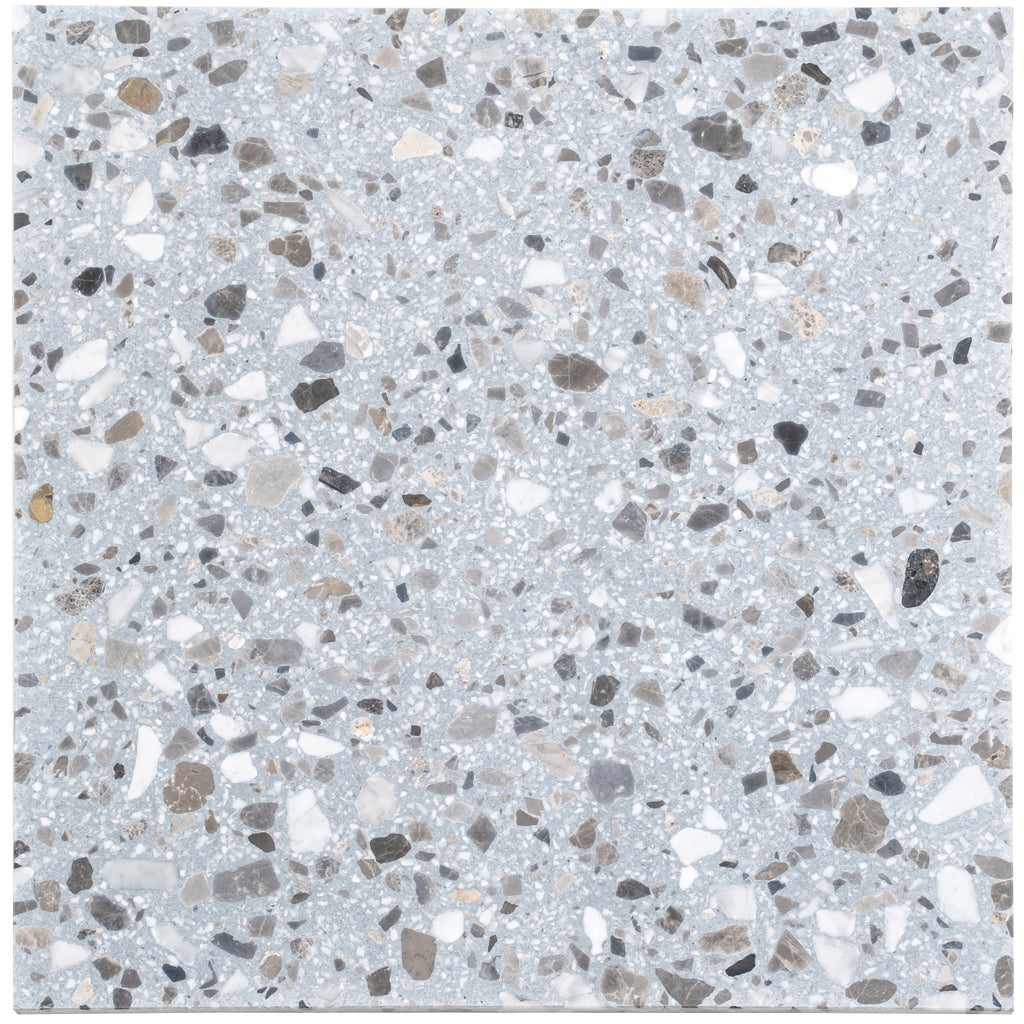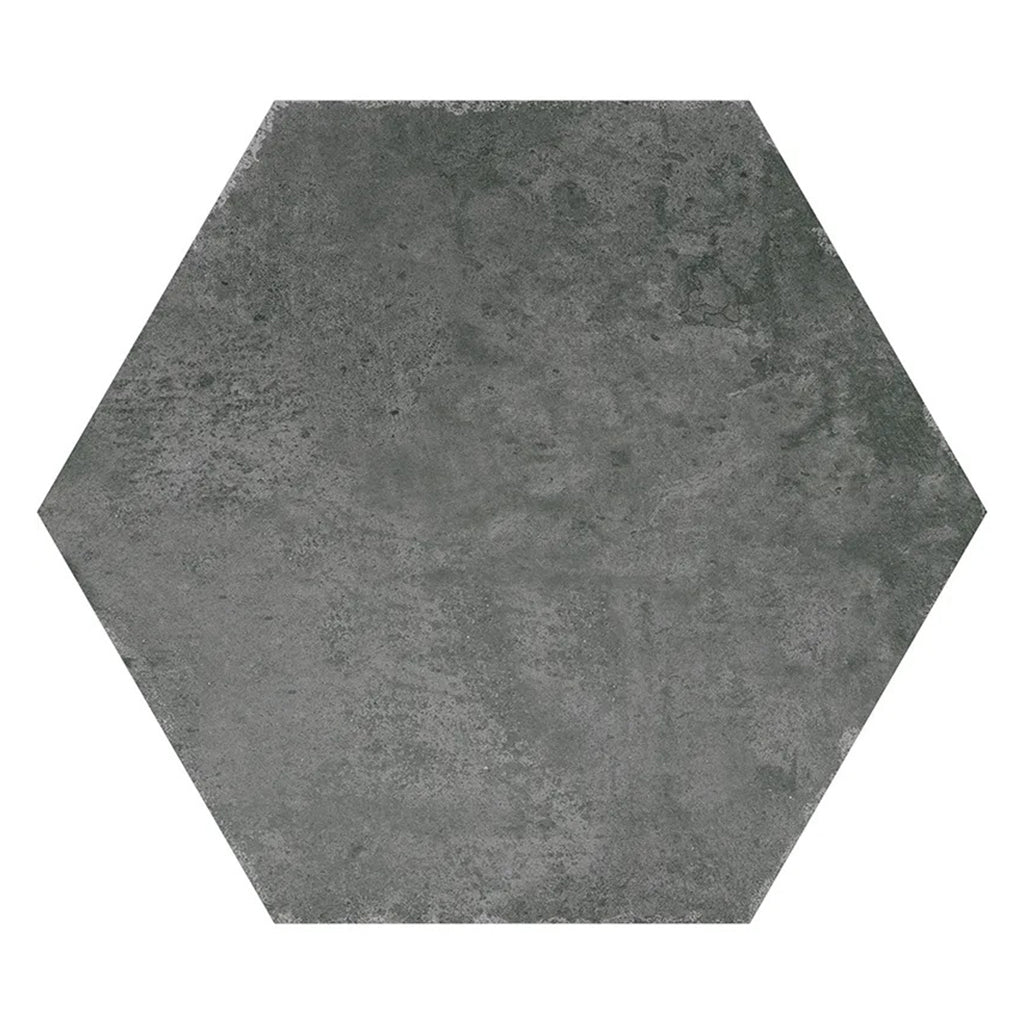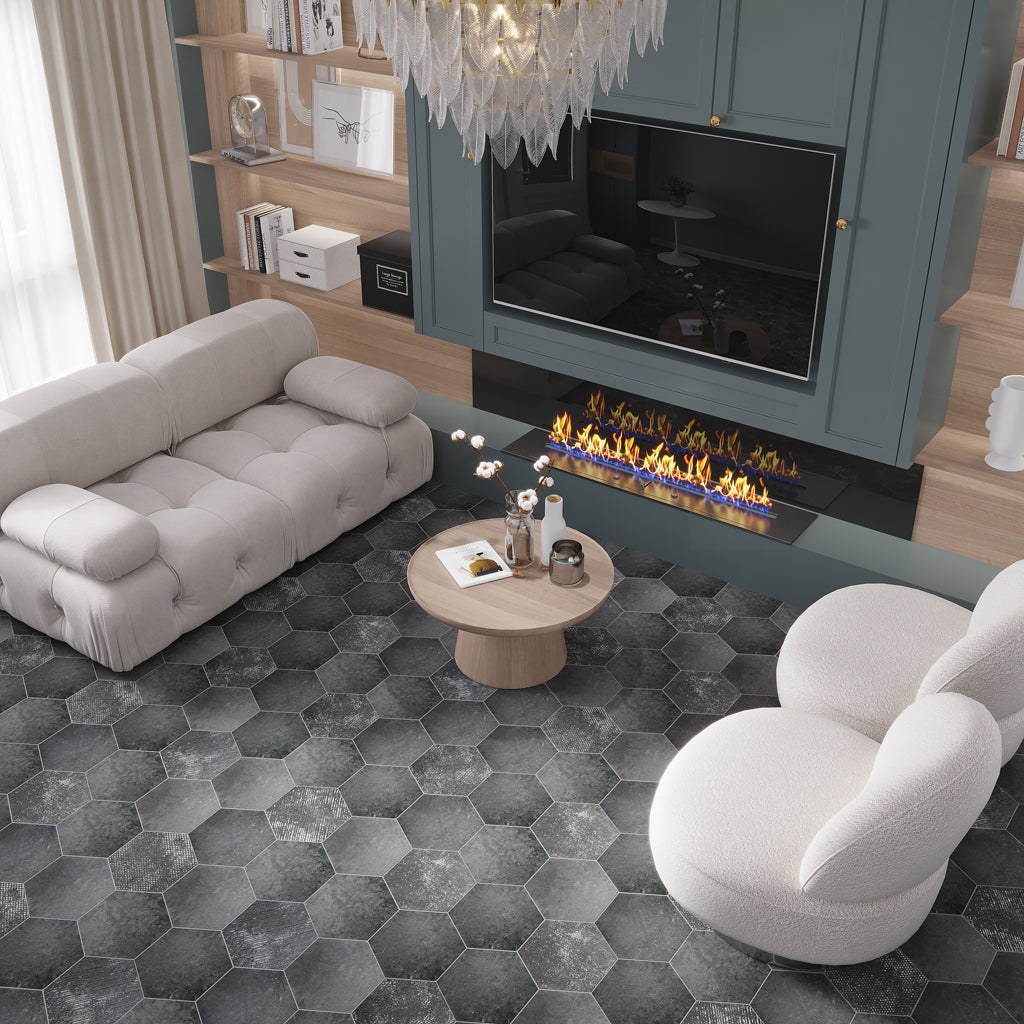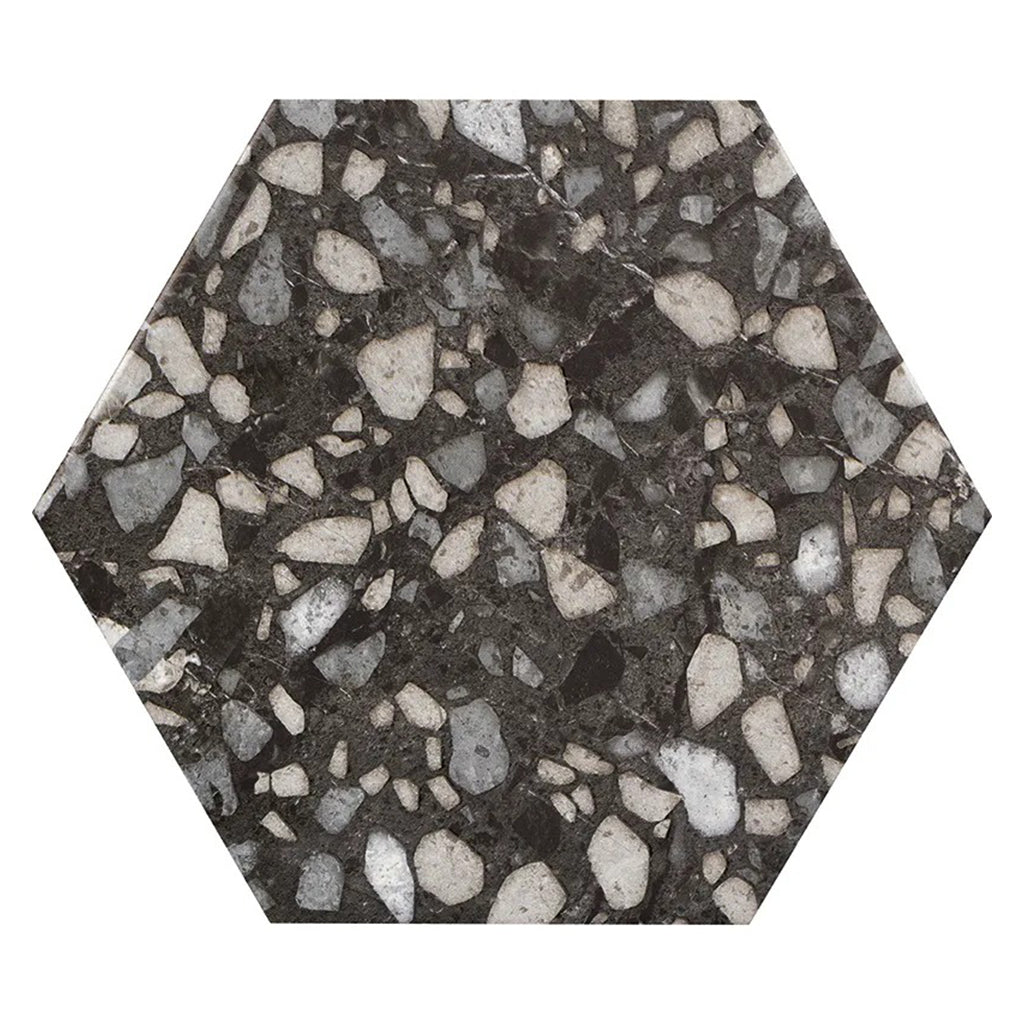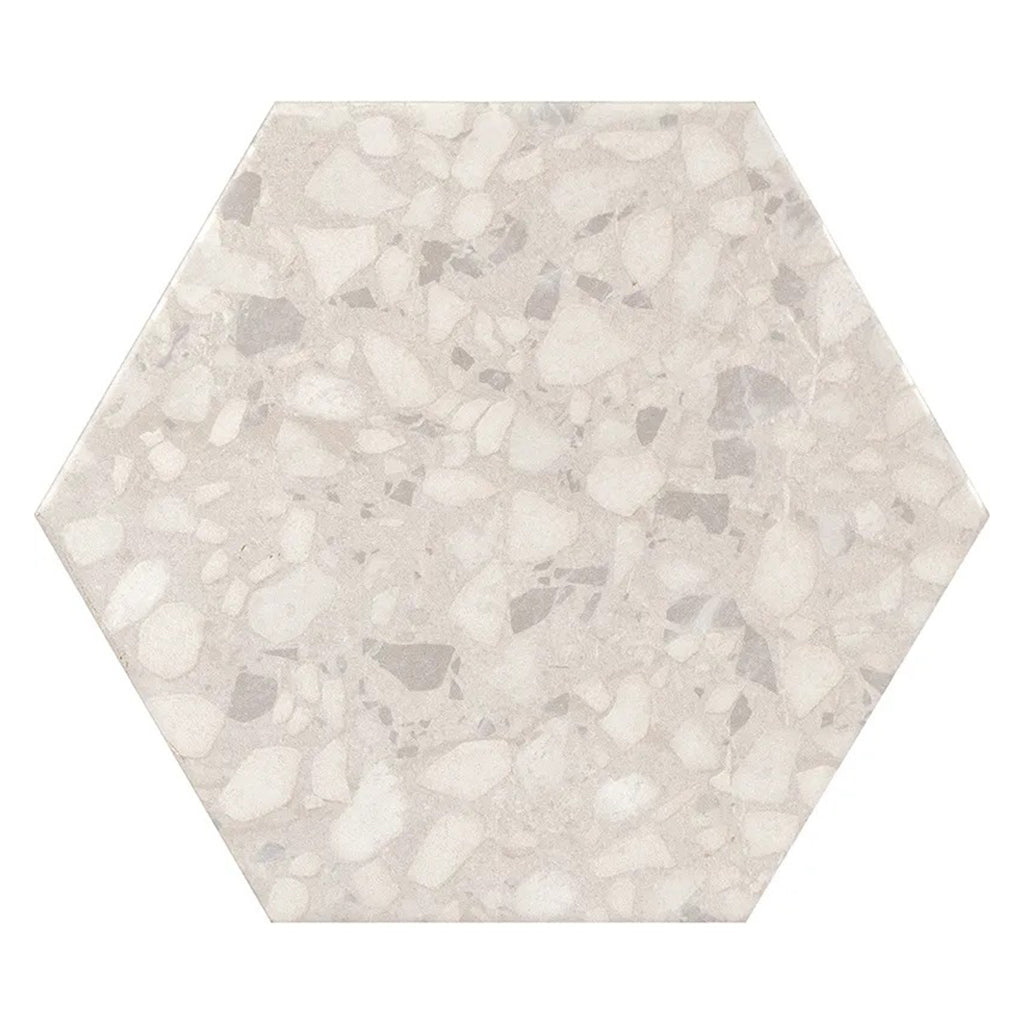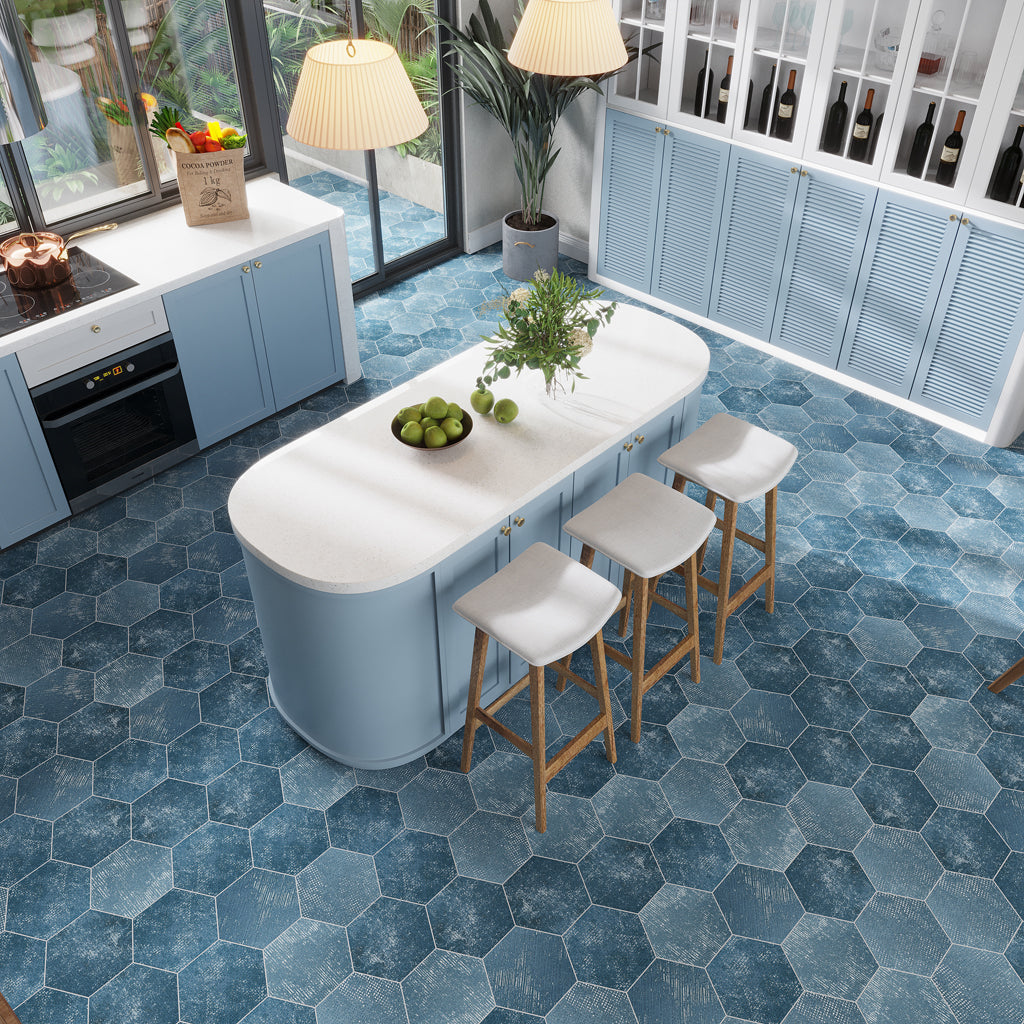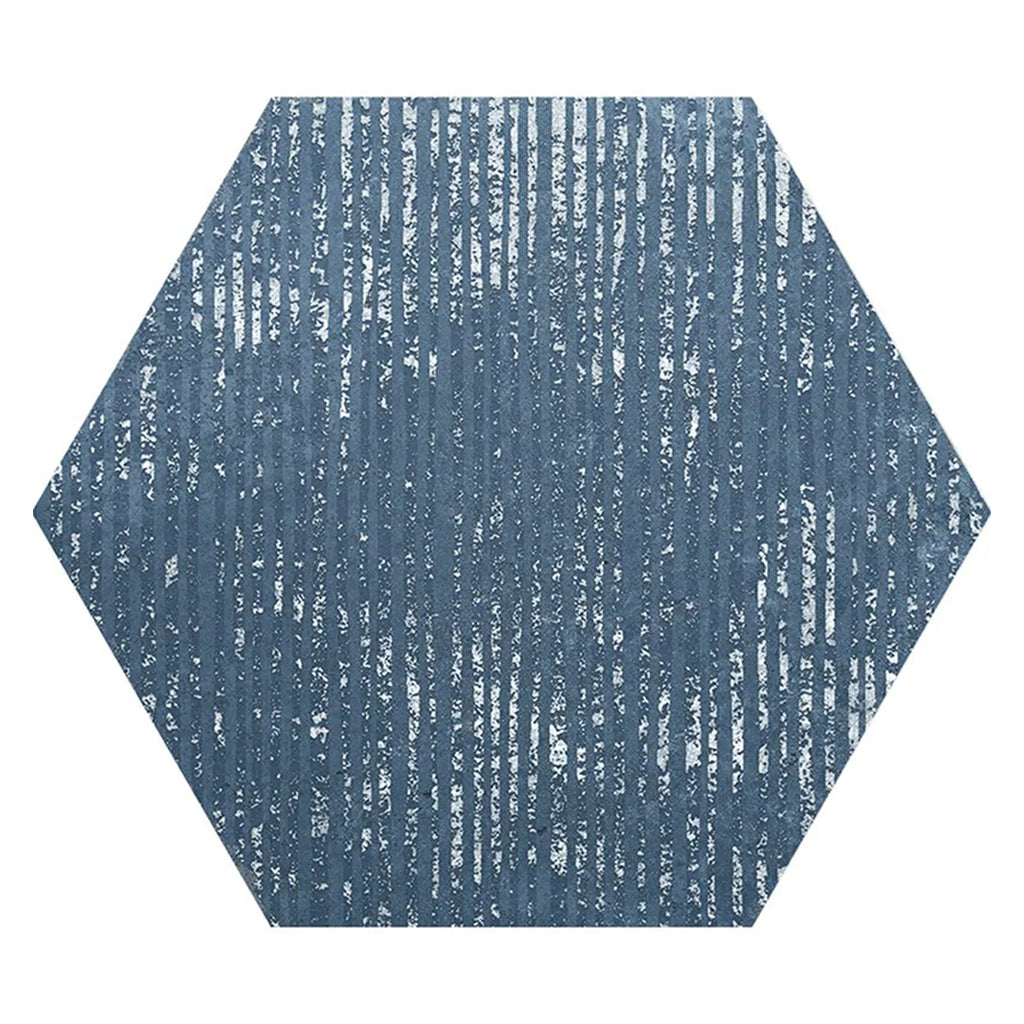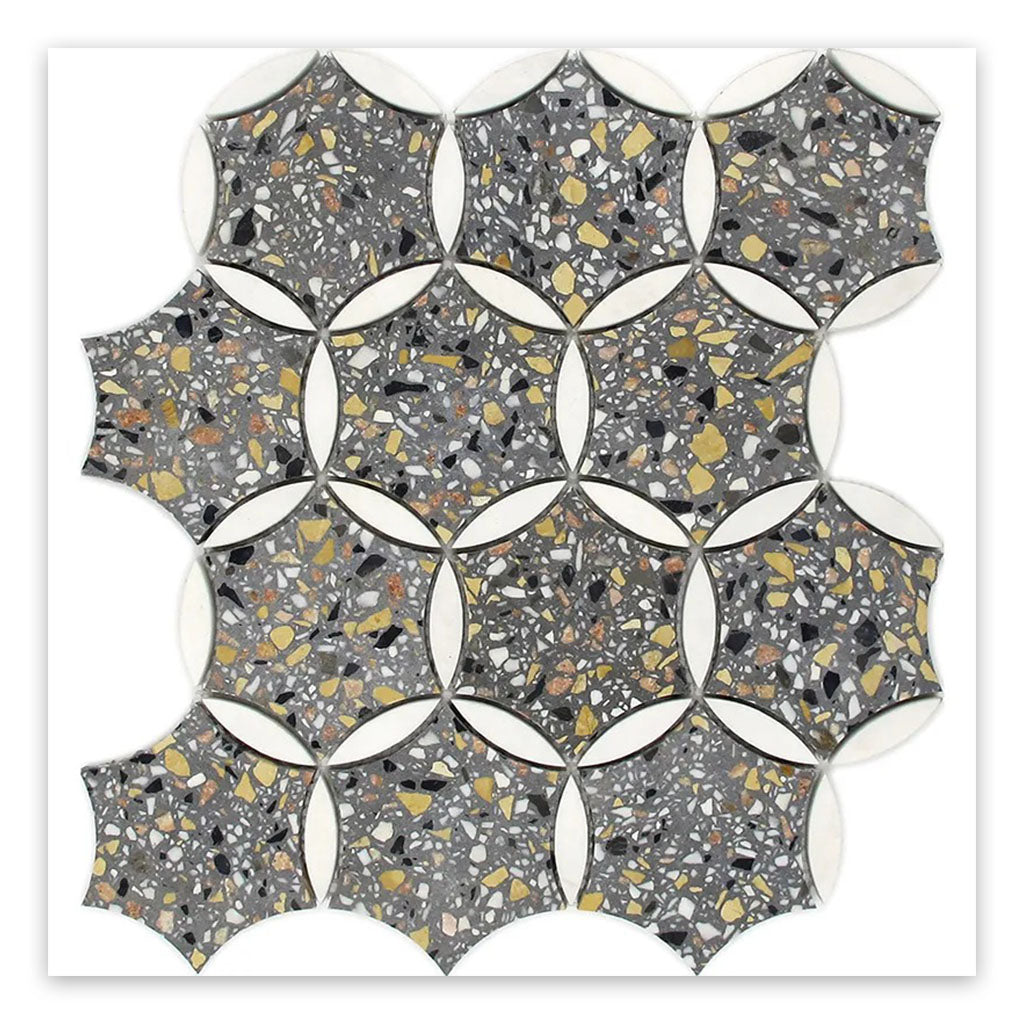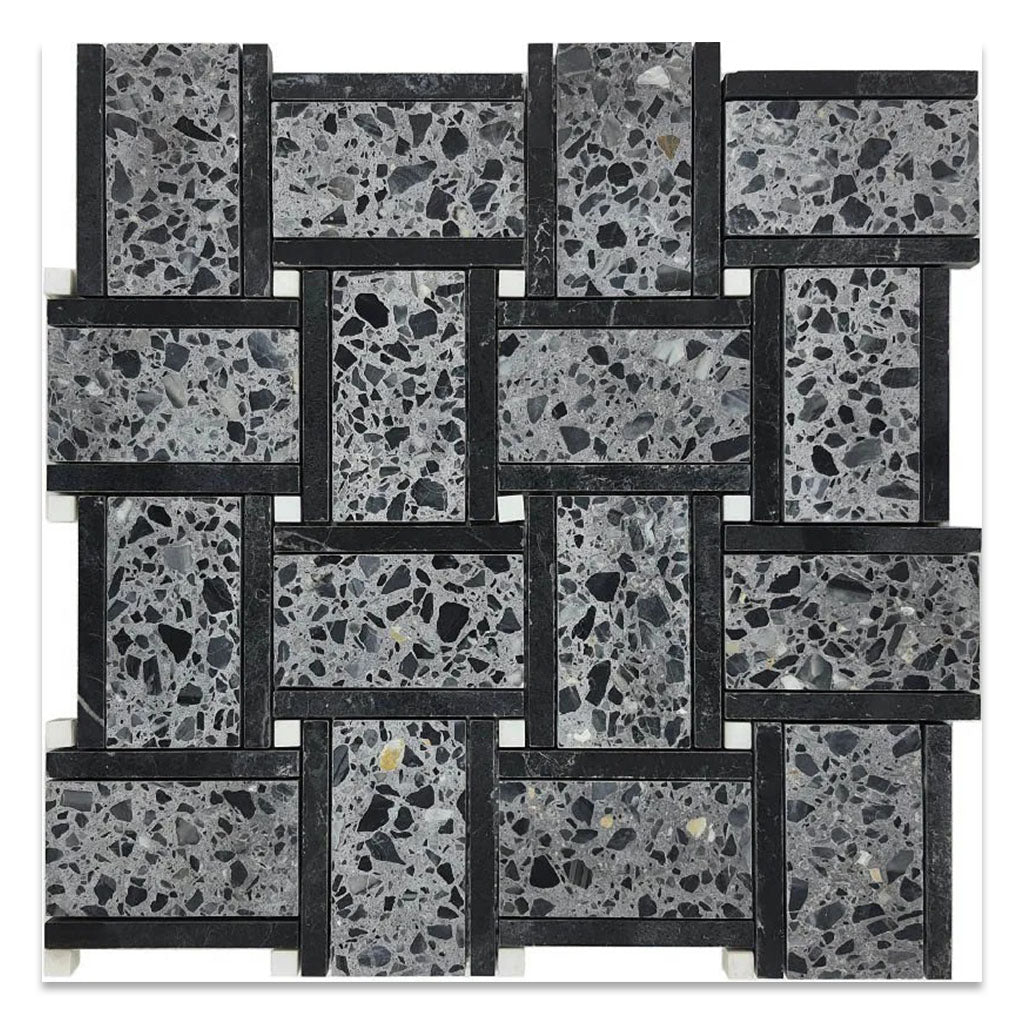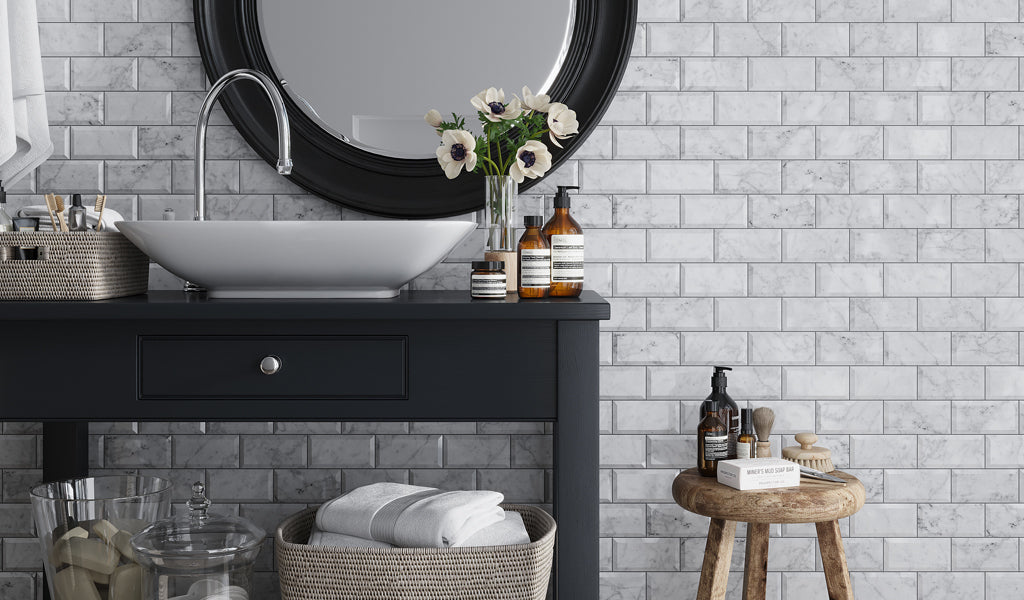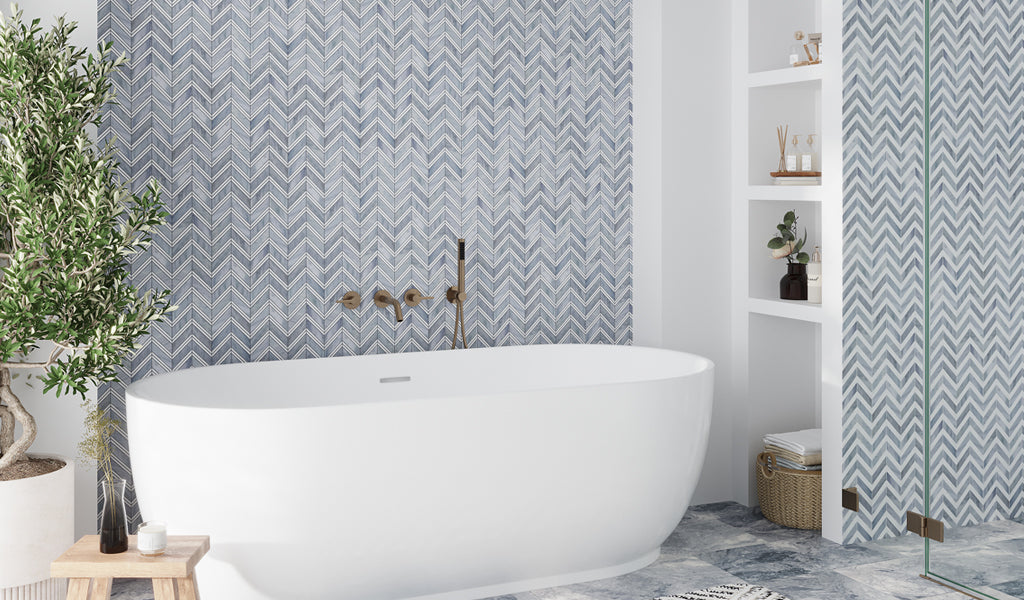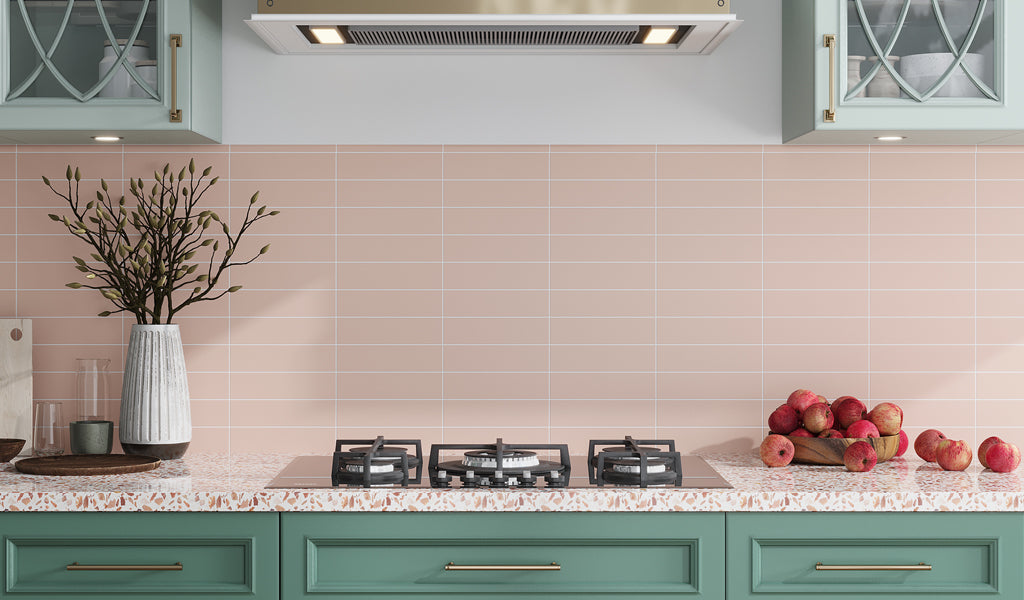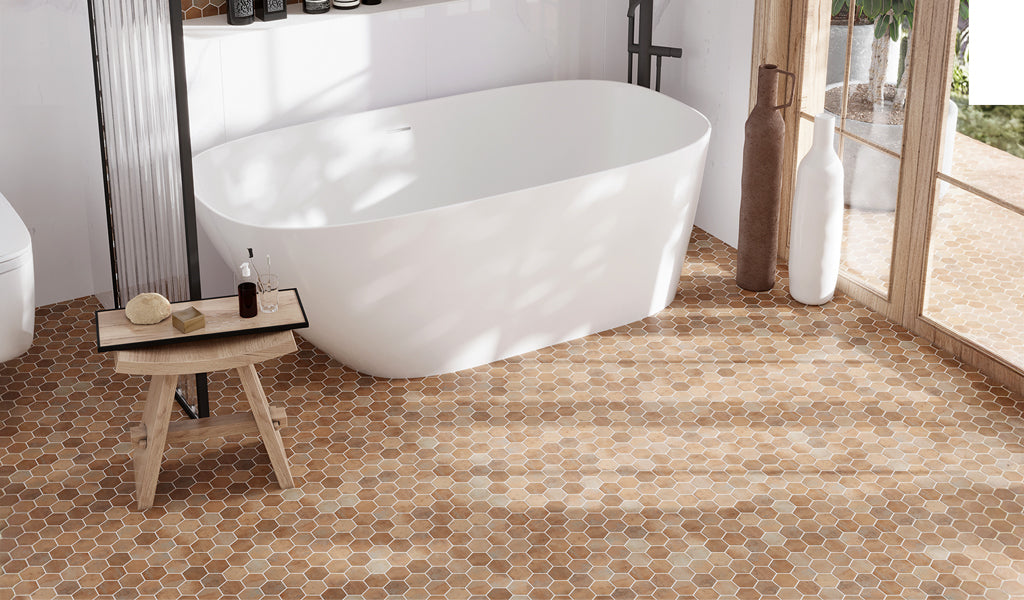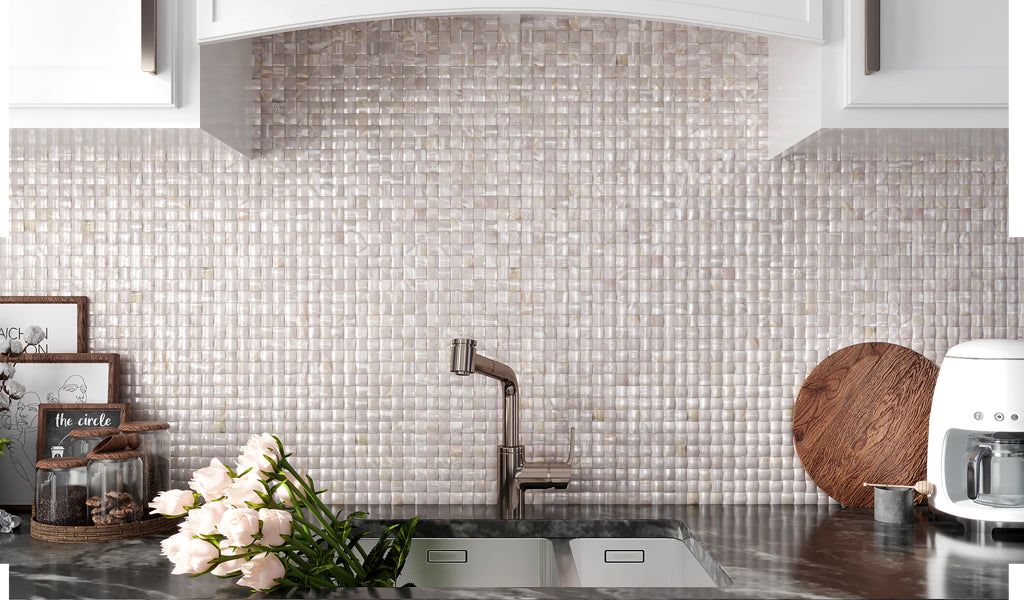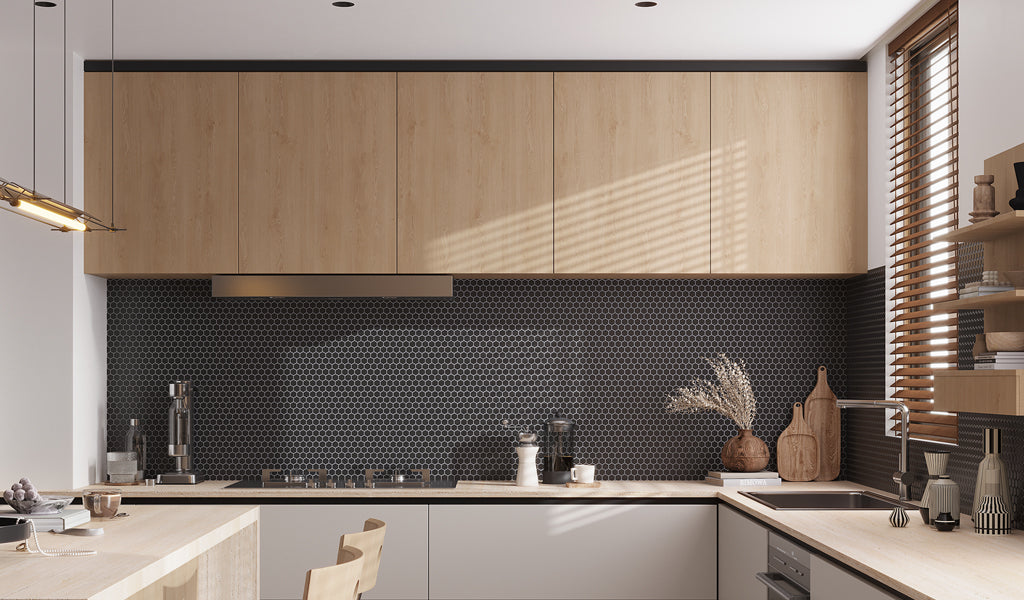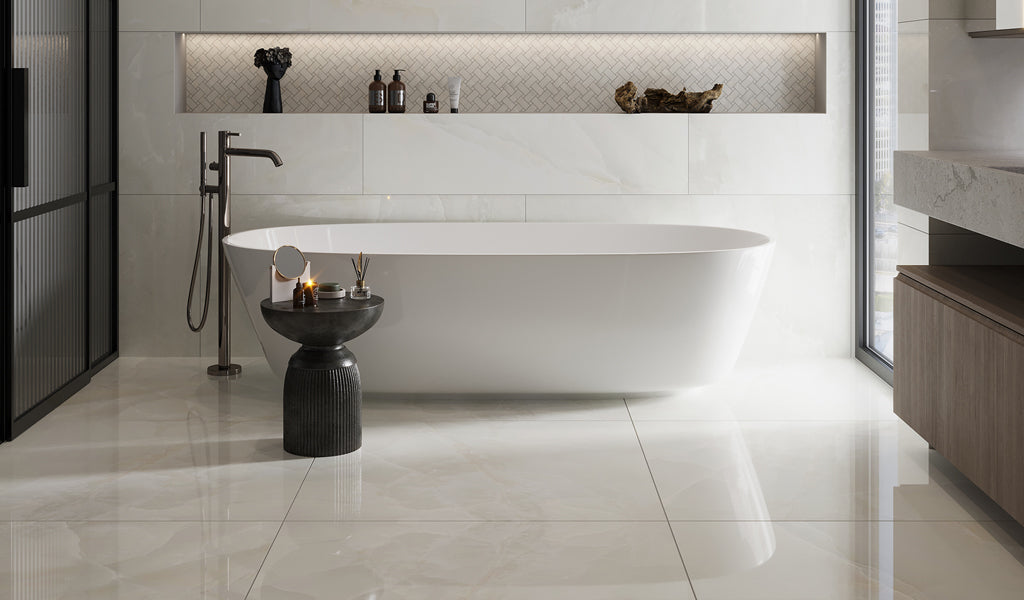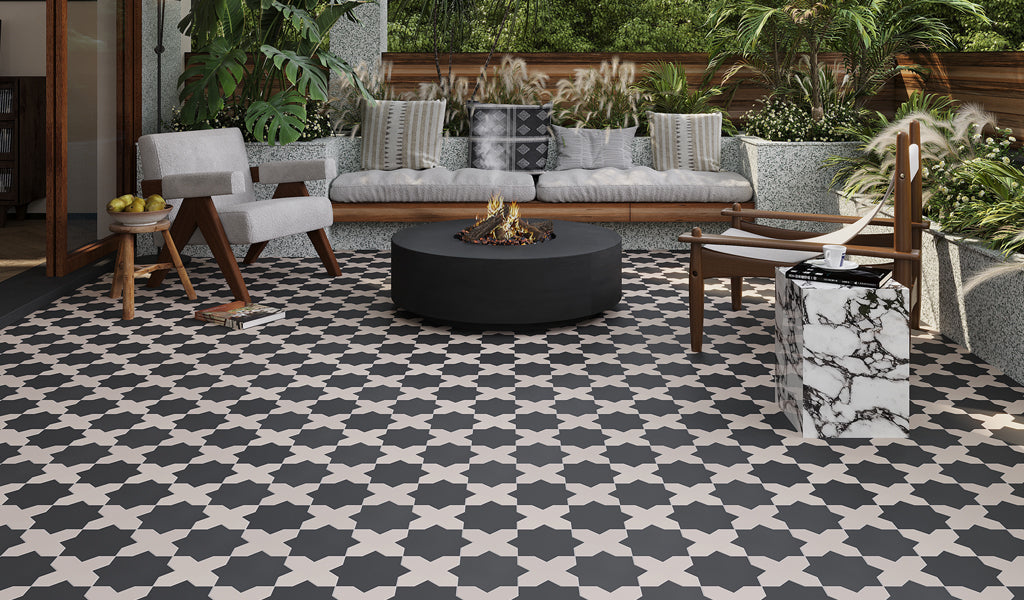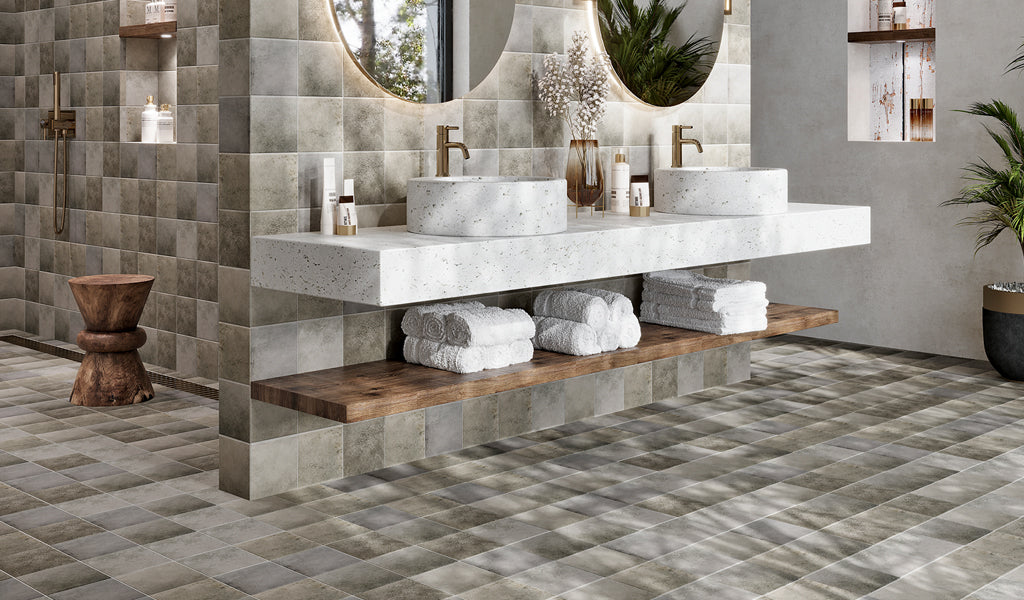Terrazzo Tile vs Terrazzo Look Tile: What's the Difference?
May 30, 2025
If you’re wondering “what is terrazzo tile?” and how is it different from faux porcelain alternatives, this guide will provide all the answers you seek. Terrazzo tile needs no introduction. For decades, it has been the flooring of choice, loved for its distinctive, speckled aesthetic. Whether designing a new kitchen or upgrading dated bathroom floors, this versatile surface finish is a top contender that easily ties into any style of interior design. However, real terrazzo can be eye-wateringly expensive and requires specialized installation and care.
Thanks to state-of-the-art manufacturing, porcelain tiles can now emulate the appearance and texture of authentic terrazzo, providing a stylish alternative with exceptional properties that allow for bountiful applications. Terrazzo look porcelain tile brings an air of sophistication to contemporary spaces, at a lower price tag and with simpler installation and low upkeep.
To break down terrazzo flooring, we delve into the differences, benefits, and considerations of each option so you can make an informed decision for your next project.
Real Terrazzo vs Terrazzo Look Porcelain Tile
Traditional terrazzo is a style of flooring that has been used since ancient times. It is made from fragments of crushed marble, quartz, granite, or glass embedded in cement or epoxy, then grinded and polished until smooth. It is important to note that genuine terrazzo floors and walls are porous and susceptible to staining from liquid spills or dirt seeping into the tile’s pores. Periodic sealing is required to repel any form of liquid and guard against high levels of moisture and humidity.
Terrazzo-look porcelain, also referred to as faux terrazzo tile, is not made from composite materials. Rather, it is manufactured to simulate the scattered specks and chips of the original using digital printing and high-definition glazing. Porcelain is made from refined clays and fired at extremely high temperatures, resulting in a robust tiling material that’s almost completely impervious. Much like the other “look” products Apollo Tile offers, such as terracotta, marble, and wood look tile, faux terrazzo flooring delivers a plethora of benefits and can endure in areas that its authentic counterpart can’t.
| Feature | Terrazzo Tile | Terrazzo Look Porcelain Tile |
|---|---|---|
| Material | Cement or epoxy with glass/stone chips | Porcelain tile |
| Appearance | 100% natural aggregates | Mimics the look via printed design |
| Color & Finish | Customizable colors, polished finish | Pre-set styles in polished or matte finish |
| Durability | Susceptible to staining and moisture absorption. Requires sealing | Highly durable, hardwearing, and requires no sealing |
| Application | Residential and light commercial floors | Residential and commercial spaces |
Pros and Cons of Terrazzo Flooring Tile
So now that we’ve touched on the basics of what is terrazzo tile, we’ll now look at how these modern tile options weigh up against each other. Below are the pros and cons of terrazzo tile and faux terrazzo flooring:
Pros of Terrazzo Tiles:
- Authentic and faux terrazzo tiles are available in large formats and can be finely joined to form a uniform surface that closely resembles traditional poured-in-place terrazzo flooring.
- The colored fragments displayed on both tiling materials can be subtle or pronounced, adding just the right splash of color and a layer of depth in any space they inhabit.
- Genuine terrazzo and terrazzo look porcelain tile pack a real design punch that enliven any setting, whether adding flair to a fireplace surround or turning walls into conversation starters.
- With proper installation and care, terrazzo flooring and its look-alike can last for decades if not years.
Cons of Terrazzo Tiles:
- Authentic terrazzo flooring is expensive upfront and labor-intensive. This is where faux terrazzo flooring comes in to offer a more affordable and accessible alternative.
- Both materials require professional installation to achieve a polished and long-lasting finish.
- Both are susceptible to cracking if the substrate shifts or isn’t properly prepared at installation.
- Due to its delicate nature, real terrazzo tile isn’t always suitable for wet and high-traffic areas. In contrast, porcelain can thrive in bathrooms, outdoors, and areas that experience high footfall.
- Traditional installation needs periodic sealing to maintain its durability and good looks. On the other hand, porcelain tile that looks like terrazzo can handle years of use without the need for a protective sealant.
- Because it is printed, terrazzo looking tiles may not age as gracefully, while patination is natural with real terrazzo as it ages and embeds into its environment.
Terrazzo and Terrazzo Look Porcelain Tile Ideas
Finer, denser terrazzo and its look-alike come in various styles, colors, textures, and formats to complement just about any interior design theme.
1. Classic White Terrazzo for Sophisticated Modernity
White terrazzo tile effortlessly blends traditional charm with modern minimalism, making it a coveted choice for those seeking a crisp, well-appointed look. Apollo Tile’s White 8x9 Matte Hexagon Porcelain Tile brightens any room it is placed in and pairs wonderfully with sumptuous contemporary furnishings.
2. Light Gray Terrazzo for Timeless Elegance
Terrazzo flooring in a light gray hue delivers understated elegance that suits both classic and modern aesthetics. Gray Beige 24x24 Honed Square Terrazzo Large Format Tile, for instance, creates a catchy yet balanced atmosphere, making it perfect for serene living areas, spa-like bathrooms, or minimalist commercial spaces.
3. Dark Charcoal Gray Terrazzo for Urban Grit
In a darker shade of gray, faux terrazzo tile in a crisp hexagon shape delivers a bold, urban edge to diverse interiors - think loft living rooms with exposed brick, sleek metal furnishings, and sculptural lighting. Consider Charcoal Gray 9x11 Matte Hexagon Porcelain Tile for dramatic floors that serve as a grounding foundation.
4. Black and White Terrazzo for Monochromatic Glam
Expect high-contrast and a striking aesthetic when you choose black and white terrazzo wall and floor tiles. This monochromatic pairing creates an intriguing interplay between dark and light fragments, ideal if you desire a dramatic entryway, chic powder room, or modern kitchen backsplash. Here, you can combine Charcoal Black 9x11 Matte Hexagon Porcelain Tile with Soft Ivory-Beige 9x11 Matte Hexagon Porcelain Tile.
5. Bold-Colored Terrazzo for an Eye-Catching Statement
Who says you’re only limited to neutrals when designing with terrazzo? Bold-colored options in blue and pink bring eye-catching flair that transform the simplest surfaces into vibrant works of art. Our Indigo Blue 9x11 Textured Hexagon Porcelain Tile is just as irresistible as it is resilient.
6. Mixed Material Terrazzo for Intricate Detailing
Mixed-material terrazzo tiles incorporate marble to create mesh-mounted mosaics in intricate shapes. This detailing imparts a rich tapestry underfoot or on walls, adding just enough depth, dimension, and a bespoke feel to custom design projects. Case in point: our Gray White 12x13 Honed Star Round Terrazzo Marble Mosaic Tile.
Cost Comparison: Is Terrazzo Expensive?
Real terrazzo is undoubtedly a premium flooring option that can also fetch a slightly higher price tag to install. Terrazzo tile cost can range from $20 to $100 per square foot, including labor. Poured-in-place terrazzo can be installed at an even higher rate due to labor and equipment.
Porcelain tiles designed to look like terrazzo are much more budget-friendly, ranging from $5 to $15 per square foot. To sum up, if cost is a key consideration, faux terrazzo flooring and wall tiles prove to be a significantly more economical way to achieve a similar aesthetic and even greater durability. If installation of new tiles is on the horizon, check out our Ultimate Guide to Finding the Right Tile Installer.
Terrazzo Tile vs Terrazzo Look Tile Installation
Installation of real terrazzo and terrazzo look porcelain tile requires expertise and precision, proper subfloor preparation, and meticulous application of quality grout and adhesive to achieve the best results. Floor tile must be installed on a well-levelled and smooth surface that’s clean and dry.
Terrazzo flooring should be sealed after the adhesive has dried and right before the grouting process. A penetrating sealer seeps into the pores of the tiles, forming a breathable shield that locks moisture out. Typically made from silicone or latex, this type of sealant offers protection without altering the appearance of the tile or grout lines.
Whether installed as kitchen backsplash, shower flooring, or in high-traffic areas, porcelain terrazzo-look tile does not require sealing. It possesses incredible strength and can cope with whatever life throws at it without deteriorating in quality. Of course, with all materials, proper installation and maintenance are crucial for long-lasting tilework.
Conclusion
Without a doubt, one of the hottest design trends enjoying a bold and beautiful resurgence is terrazzo. If you’ve been seeing this speckled material used everywhere from kitchens to bathrooms, and wondering what all the rage is about. We hope this guide answers the question “what is terrazzo tile”. Real terrazzo flooring is an iconic finish with unparalleled beauty. However, for homeowners and designers looking for terrazzo's charm and character without the cost and complexity, terrazzo look porcelain tile is a practical and stylish alternative. Both tiling options have a place in contemporary design—your decision will ultimately depend on the project scope, budget, and performance needs.
At Apollo Tile, our goal is to understand your lifestyle needs and match the perfect product to your project. Our extensive collection of wall and flooring tiles guarantees to bring joy to any space for years to come. Reach out to our customer service team today and let us help you bring your vision to life!
Frequently Asked Questions:
1. What is the lifespan of terrazzo flooring?
When properly installed and maintained, both traditional terrazzo and terrazzo looking tile can last 50 to 75 years or more. Due to its superior durability, some historical buildings still retain their original terrazzo floors from the early 20th century.
2. Does faux terrazzo tile crack easily?
Porcelain tiles are engineered to be dense, robust, and highly resistant to impact. This means they are less prone to cracking under normal use. However, when the subfloor is unstable or uneven, large-format terrazzo-look tiles can crack and will need immediate replacement.
3. Is terrazzo tile too slippery for a bathroom?
Polished terrazzo surfaces can be quite slippery when wet, making them potentially hazardous when used as bathroom floor tile. However, Apollo Tile’s floor tiles have non-slip additives that have been incorporated into the finish. Alternatively, you can go for a matte finish for better slip-resistance underfoot.
4. What are the different finishes for terrazzo?
Terrazzo tiles can be found in polished and matte finishes. Polished tiles have a reflective quality that adds radiance to the room, while a non-shiny matte finish is slightly textured and lends a more refined and understated look.
5. Is terrazzo tile hard to maintain?
Real terrazzo floors require sealing once or twice a year. This is something to factor in if you’re set on an authentic option. On the other hand, terrazzo look porcelain tile requires minimal care to keep in tip-top shape. The tiles are watertight and do not need sealing.
6. Is terrazzo a natural stone or man-made tile?
Traditional terrazzo is a man-made composite material consisting of marble, quartz, granite, and glass chips. Faux terrazzo tile is porcelain made from natural clays and fired in a kiln at higher temperatures. The tiles are then printed to mimic the appearance of terrazzo.

